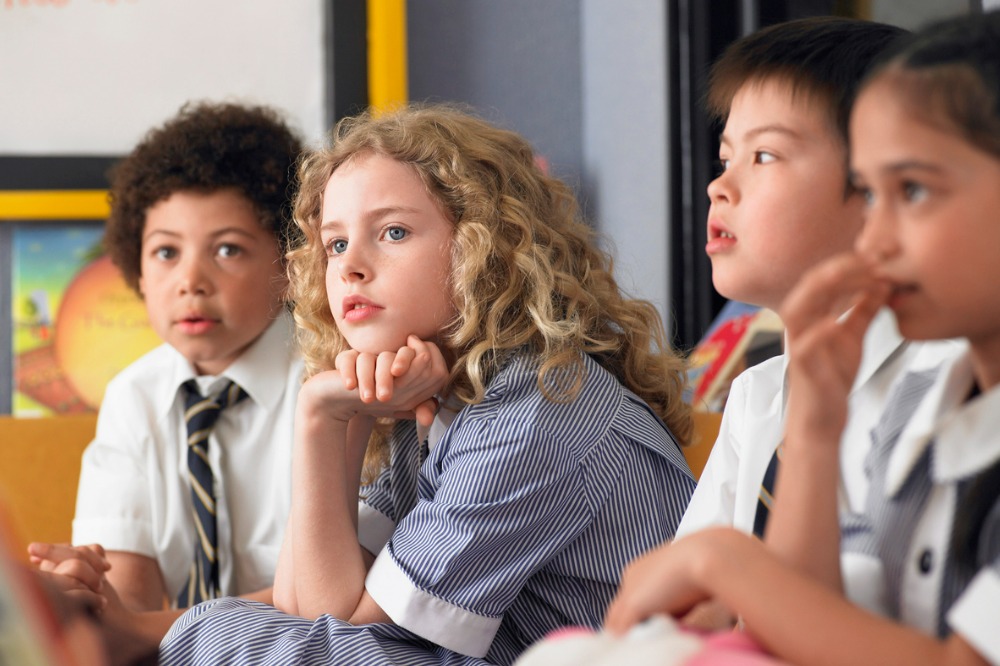
In recent years, a number of single-sex schools have made the move to co-ed, citing the need to provide valuable social and developmental benefits for students and take “a necessary and inevitable step forward in the context of a modern society”.
St Mary’s Cathedral College, Cranbrook and Newington College are just a few schools that have recently decided to become co-educational schools – a move that has been both celebrated and protested by families who are split down the middle of an age-old debate.
As pointed out in an article published in The Conversation by Jessica Kean, a Lecturer in Gender and Cultural Studies from the University of Sydney, tradition plays a significant role in this debate. Often, parents want their children to have a similar schooling experience to themselves, while for others it’s about access to specific resources and experiences.
“Elite boys schools have spent generations accumulating social and physical resources tailored to what they believe boys are interested in and what they believe is in boys’ best interests,” Kean wrote. “This includes sports facilities, curriculum offerings, approaches to behaviour management and “old boys” networks.”
The Educator sat down with two girls’ school principals to ask why they believe single-sex schools still have a place in the 21st Century, and what the growing shift to co-ed means for their system.
A reprieve from common anxieties
Loreto Marryatville College Principal Kylie McCullah said single-sex education provides an environment where students can truly feel a sense of belonging.
“It offers a safe haven to explore a diverse array of interests without the weight of judgment or stereotypes,” McCullah told The Educator.
“Students in same-sex education environment are free from the distractions and biases often present in coeducational settings, students can flourish academically and personally.”
McCullah said the benefits become even more pronounced in senior school as adolescents navigate the complexities of body image and self-esteem.
“Single-sex schools offer a reprieve from some of the anxieties associated with these issues, allowing students to focus on their academic and personal growth without added pressures,” she said.
“Moreover, the tailored approach to education that single-sex schools offer enables educators to personalize the learning experience, addressing the unique needs and challenges faced by each gender. By recognising and accommodating these differences, educators can better support student success.”
A growing body of research suggests that single-sex education correlates with higher academic achievement, with NAPLAN scores tending to be slightly higher in single-sex schools compared to their coeducational counterparts.
McCullah said this underscores the positive impact that the focused learning environment of single-sex education can have on academic outcomes.
“In 2024, the importance of single-sex education remains significant as it continues to provide a valuable alternative to traditional coeducational settings,” she said.
“By fostering a supportive and focused learning environment, single-sex education equips students with the tools they need to thrive academically, personally, and socially in an ever-evolving world.”
What the co-ed shift means for single-sex schools
In recent years, there has been a move by some prominent single-sex schools to transition into co-ed environments.
However, McCullah points out that while there has been a modest decline in the percentage of students educated in single-sex schools over the last decade, the absolute number has actually grown, indicating continued demand for this educational model.
“In fact, girls' schools have seen significant enrolment growth, with 96% of girls' schools across NSW reporting increased demand for places in 2023. When looking specially at South Australia there has been nearly an 8% growth in enrolments within girls’ schools over the past 6 years,” she said.
“Although some single-sex schools have transitioned to coeducation, particularly boys' schools, the number of girls' schools making this shift remains minimal. This trend may be attributed in part to the perception that coeducational environments may favour boys more than it does girls.”
McCullah notes that while some research suggests that boys may perform better in coeducational settings, girls' schools provide unique benefits, fostering increased confidence, class participation, and leadership skills among female students.
“At Loreto College Marryatville, we've witnessed firsthand the positive impact of an all-girls environment,” she said.
“Our students are encouraged to pursue diverse interests without fear of judgment, leading to increased confidence and participation in both academic and co-curricular activities. Moreover, our specialised learning environment caters specifically to the needs of girls while promoting gender-neutral interests and opportunities for leadership.”
McCullah said that as parents navigate the important decision of choosing a school for their daughters, her school “remains committed to providing a supportive and empowering environment”.
“We believe in nurturing strong, passionate, and confident girls and young women who are equipped to succeed in an ever-changing world.”
‘Girls don’t shy away from being too bright, too loud, or too bold’
Strathcona Girls Grammar Principal, Lorna Beegan says girls’ schools remain an “essential” part of Australia’s education landscape in the 21st Century.
“First and foremost, girls’ schools are designed for educating girls in a way that works for girls,” Beegan told The Educator.
“We offer young women an environment that’s optimal for their learning and provide them with opportunity and space to develop healthy aspirations and to strive for and be more.”
Beegan said that in her experience, single-sex environments enable girls to be more confident to take informed risks without the fear of judgement from male peers – and without the pressure to be a calming, balanced presence in a co-ed classroom to benefit the boys in the classroom.
“Extensive research also shows that in an all-girls environment, girls set higher goals, they are more likely to ‘give it a go’, they encourage one another, and they don’t shy away from being too bright, too loud, or too bold,” she said.
“We don't need schools to replicate society, we need schools to equip students—particularly girls—with the skills, confidence, voice, and understanding required to navigate the world and make it a more equitable and progressive place.”


